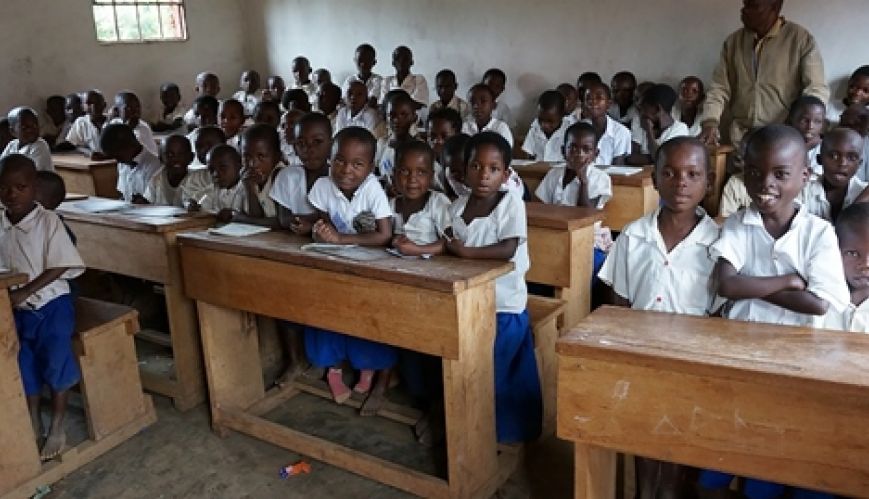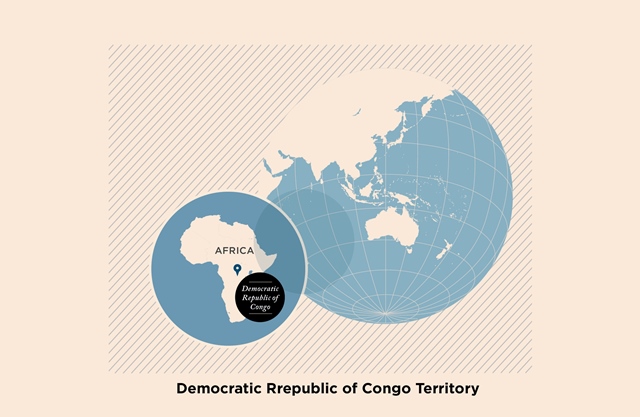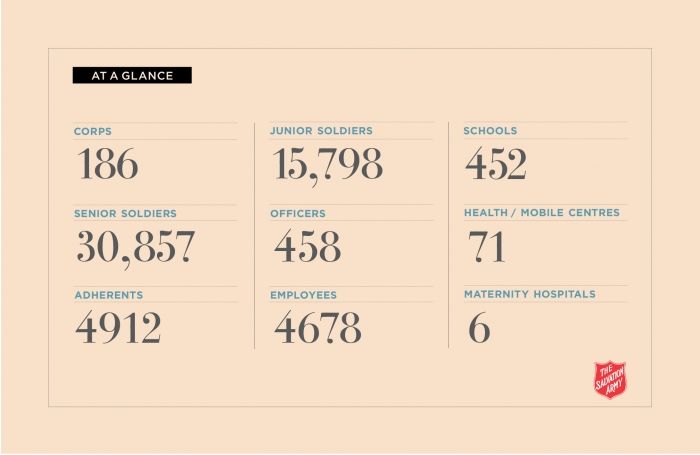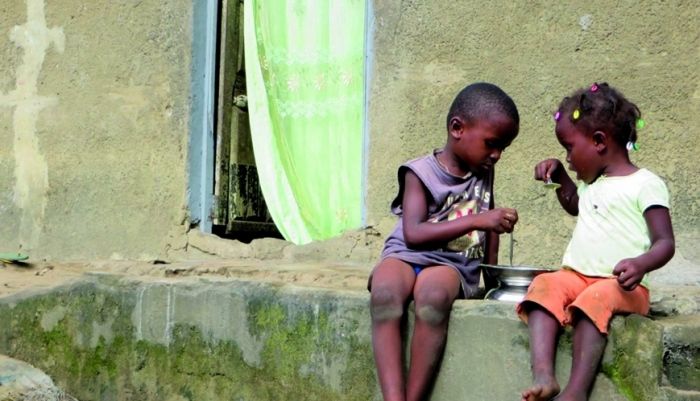Global Focus: Democratic Republic of Congo Territory - Investing in Education

Global Focus: Democratic Republic of Congo Territory - Investing in Education
Children in the eastern region of the Democratic Republic of Congo have greatly benefited from The Salvation Army’s investment in education.
How well do you know The Salvation Army world? This month, our Global Focus column highlights the work in the Democratic Republic of Congo
The Democratic Republic of Congo is rich in natural resources, but political instability, a lack of infrastructure, deep-rooted corruption and centuries of both commercial and colonial extraction and exploitation has limited holistic development.
From 1908 to 1960 the country was called the Belgian Congo and from 1971 to 1997 it was named Zaire. Since then, it has been called the Democratic Republic of Congo (DRC). Christianity is the majority religion, followed by about 95 per cent of the population, which is about 80 million.

The Salvation Army places a huge emphasis on education, operating more than 450 schools. There is also a Salvation Army-run university, called William Booth University, located in the capital, Kinshasa. Territorial Headquarters is situated in Kinshasa, under the leadership of Colonels Lucien and Marie Lamartiniere. The territory must deal with more than seven languages, with the gospel being preached in French, Swahili, Chokwe, Kikongo, Lingala, Tshiluba and Umbundu.
 An overview of the Democratic Republic of Congo Territory.
An overview of the Democratic Republic of Congo Territory.
HISTORY
The first Salvation Army corps was established in Leopoldville (now Kinshasa) in 1934 by Adjutant (later Commissioner) and Mrs Henri Becquet. By decree of Leopold III, king of the Belgians, The Salvation Army was granted legal status on 21 February 1936. The early work of the Becquets had a huge impact in Leopoldville and The Salvation Army flourished. The following is an except from the DRC Salvation Army website:
The first open-air service was held at the Zando ya Imbwa market near Ndolo on 14 October. The impact of these missionaries (the Becquets) in their white uniforms was electrifying. The response from the Congolese was so enthusiastic and overwhelming that, by Christmas, Becquet had to suspend further proselytising in the African neighbourhoods out of concern that the burgeoning church would upset the colonial status quo. On the anniversary of the first Salvation Army service in October 1935, 2000 Congolese attended. The colonial authorities urged the Becquets to move their work outside the city. Instead, the Salvationists opened a second church in Binza, built entirely by the Congolese themselves, on the heights above old Leopoldville.
Work spread to the neighbouring Congo in 1937 and 16 years later it became a separate command, later being elevated to territory status. The Democratic Republic of Congo Territory came into effect on 1 June 2008 and is part of the Africa Zone of The Salvation Army. It oversees 11 divisions, four districts and two sections.
GENERAL’S VISIT
The huge impact of General André Cox’s visit in 2014, to celebrate the 80th anniversary of The Salvation Army in the country, is still being felt in the territory after the enrolment of more than 300 senior soldiers during the congress, which attracted 7600 people, and hundreds who knelt at the mercy seat. The General was accompanied by Commissioner Silvia Cox, who led a women’s rally which attracted an audience of 2000.
EDUCATION
Poverty is just one of many complex issues in the Democratic Republic of Congo. Prolonged civil wars have caused distress for millions. Children have been especially impacted, with many being orphaned and malnourished through poverty and neglect. Many internally displaced children remain outside the education system, because their parents are no longer there or have difficulties paying for their school fees. Also, displaced children cannot afford the required food, uniforms and learning materials. Hunger and weak nutritional status also contribute to dropping out of school.
The Salvation Army found that more than half of the children going to its schools in the hardest hit regions of Bagira and Kabare were malnourished, leading to poor learning environments. In 2010, The Salvation Army in the Netherlands, in conjunction with the Netherlands Ministry of Foreign Affairs, started a project to increase access to quality education for internally displaced children. A five-year project was implemented in Bagira and Kabare (South Kivu Province), Masisi (North Kivu Province) and Irumu (Ituri Province), where The Salvation Army runs 60 primary and secondary schools.
By the end of the project in 2015, The Salvation Army had achieved some amazing results, including:
– 433 teachers (including 204 women) trained
– 5031 children (including 2561 girls) enrolled
– 1122 pupils (including 540 girls) finished primary school with a certificate
HEALTH PROJECT
On the outskirts of Kinshasa, The Salvation Army is supporting mothers to provide nutritious food for their children by growing and using moringa trees. Moringa is known as a “miracle tree” because it is extremely rich in nutrients and almost every part has a beneficial use. Over the past year, The Salvation Army has provided moringa trees and training to more than 100 mothers.
 Children in the Democratic Republic of Congo eat a paste made from the ground leaves of the moringa tree. Moringa (also known as the miracle tree) has leaves that are rich in nutrients and can be effective in stopping malnutrition. Growing these trees helps with reforestation efforts and reduces the effects of carbon emissions.
Children in the Democratic Republic of Congo eat a paste made from the ground leaves of the moringa tree. Moringa (also known as the miracle tree) has leaves that are rich in nutrients and can be effective in stopping malnutrition. Growing these trees helps with reforestation efforts and reduces the effects of carbon emissions.
On of these mothers is Veronique. A Salvation Army volunteer from the local health clinic visited Veronique and discovered that her children were malnourished. She was given two moringa trees to plant and shown how to grind the leaves into a powder to add to the family’s food. She was also given some moringa powder to help her children recover while she waited for the trees to produce leaves. Veronique says, “Now my children are no longer falling ill. Now my children are healthy.” Story courtesy of Salvation Army UK website
Comments
No comments yet - be the first.